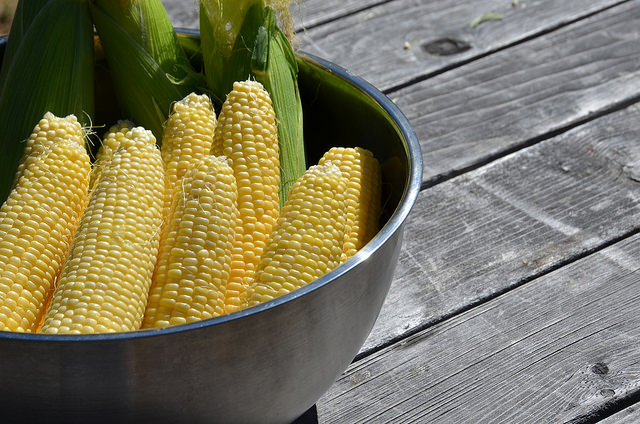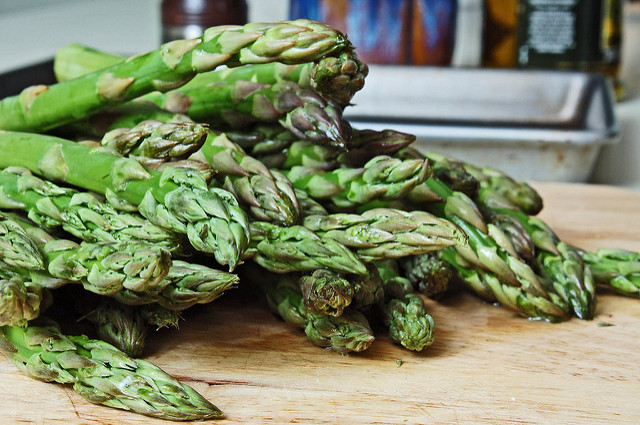Last Updated on Aug 16, 2025 by Happy Dieter
Bioavailability is the degree to which beneficial nutrients, such as vitamins or minerals, are absorbed and utilized by our body. While eating different raw veggies and protein sources gives you plenty of vitamins and minerals, cooking some foods enhances some nutrients, thereby maximizing their bioavailability. Here are the top foods that should be cooked to maximize their bioavailability, like raw spinach and veggies, that should be cooked to make the most out of them.
Key Takeaways
-
Cook Spinach and Kale: To increase the bioavailability of nutrients in spinach and kale, cooking these vegetables lightly can help unlock more vitamins and minerals for absorption.
-
Optimize Onions: Cooking onions can enhance the bioavailability of certain antioxidants and nutrients present in them, making them a valuable addition to various dishes, salads, and vegetables.
-
Enhance Tomato Benefits: Cooking tomatoes can boost the availability of lycopene, a powerful antioxidant, aiding in better absorption and utilization by the body.
-
Utilize Kale’s Potential: Cooking kale can help break down its tough fibers, making it easier for the body to access essential nutrients like vitamin K and antioxidants.
-
Maximize Corn’s Nutrients: Cooking corn can improve the bioavailability of its nutrients like vitamin B, fiber, and antioxidants, ensuring you reap the full benefits of this versatile vegetable.
Bioavailability Is the Degree to Which a Vitamin or Mineral Is Absorbed and Utilized by Our Body.
While eating different raw foods gives you plenty of vitamins and minerals, cooking some foods enhances some nutrients, and in that way maximizes their bioavailability. Here are the top foods that should be cooked to make the most out of them:
1. Spinach and Kale
Spinach and kale show an increase in certain nutrients when cooked, according to the USDA Nutrient Data Laboratory. Cooked kale, a vegetable, has 2.50 grams of protein, 0.50 grams of fat, and 2.5 grams of fiber, making it nutrient-dense. Raw kale contains similar protein and fat content but only half the amount of fiber. Other nutrients that increase in cooked kale are vitamins K, A, and beta-carotene.
The protein content of spinach increases from 0.85 grams for 1 cup of raw spinach to 5.5 grams per cooked cup. Minerals that increase in cooked spinach are potassium, calcium, iron, and magnesium, and vitamins that are more concentrated in cooked spinach are vitamin C, vitamin A, folate, beta-carotene, and lutein.
2. Onions
Onions, which are a low-calorie way to season our meals, also have an increase in some nutrients when cooked. One cup of cooked onions contains 1 gram more protein than a cup of raw onions, a higher concentration of both selenium and calcium, and a higher amount of lutein, choline, and vitamin K, than 1 cup of raw onions.
Choline helps our cell membranes move nutrients through our body, and it plays an important role in reducing inflammation, according to research. Lutein, a phytochemical, helps our vision and retina health.
3. Tomatoes
Tomatoes are high in lycopene which, according to a report from Harvard Medical School, helps in reducing cholesterol and inflammation, improving immune function, and preventing strokes. When cooking tomatoes, they release lycopene, a nutrient which makes it more readily bioavailable for absorption.
Various studies have shown that lycopene is also better absorbed with a little fat, so if a cooked tomato or tomato foods that contain tomato are too acidic for you, you could chop a raw tomato and drizzle it with olive oil to benefit from lycopene as well.
4. Kale
Kale is more nutritious when lightly steam-cooked, same as collard greens, mustard greens, broccoli, green bell pepper, and cabbage, because of bile-acid binding. Bile acid binding health benefits have been related to lowering the risk of cancer and heart disease.
And even more, kale should be cooked before eating as it contains chemicals that stop the production of thyroid hormones in our body, which leads to obesity. Two out of three Americans are either overweight or obese and according to research, it will jump to 75 % by 2020.
5. Corn
Cooking corn can significantly boost its antioxidant activity, despite a slight reduction in vitamin C. When this plant’s ability to quench free radicals was measured, cooked corn was beaten raw corn by between 25-50 %. When we cook the corn it releases a ferulic acid, which provides anti-cancer and other health benefits.
Ferulic acid, a phytochemical, is unique in that it is found in low quantities in fruits and veggies, but is found in high amounts in corn. The bioavailability of the body of ferulic acid can be increased by 500- 900 % by cooking the corn.
How Can Cooking Methods Affect the Bioavailability of Nutrients in Food?
The cooking methods used can significantly impact the bioavailability of nutrients in food. For instance, steaming or lightly sautéing vegetables can help retain more nutrients compared to boiling or frying. When looking for Healthy Carb Substitutes, consider using quinoa, cauliflower, or sweet potato as alternatives to traditional carb-rich foods.
Conclusion
By cooking foods that should be cooked to maximize their bioavailability, such as spinach, kale, onions, tomatoes, and corn properly, you can reap the full benefits of their nutrients. Don’t miss out on these simple yet crucial steps in your cooking routine. Ensuring that these foods are cooked correctly will enhance your overall health and well-being. Remember, a little extra effort in the kitchen can go a long way in unlocking the nutritional potential of these everyday ingredients.
Take charge of your health by incorporating these cooking techniques into your daily meals. Start experimenting with different recipes and methods to make the most out of these foods that should be cooked to maximize their bioavailability. Your body will thank you for the extra care you put into preparing your meals, especially when you focus on enhancing the bioavailability of nutrient-rich foods.
FAQs
Q: What Are the Benefits of Cooking Spinach and Kale to Maximize Bioavailability?
A: Cooking spinach and kale helps break down their tough cell walls, making nutrients like iron and calcium more accessible for absorption by the body. This process enhances the bioavailability of essential vitamins and minerals present in these leafy greens.
Q: How Does Cooking Onions Affect Their Bioavailability?
A: Cooking onions can increase the availability of antioxidants like quercetin. Heat breaks down the cell structure, releasing beneficial compounds that are easier for the body to absorb. Cooking onions can enhance their nutritional value compared to consuming them raw.
Q: Why Should Tomatoes be Cooked to Optimize Bioavailability?
A: Cooking tomatoes increases the release of lycopene, a powerful antioxidant known for its health benefits. Heating tomatoes helps break down cell walls, making lycopene more bioavailable and easier for the body to absorb, enhancing its nutritional value.
Q: Does Cooking Kale Improve Its Bioavailability Compared to Consuming It Raw?
A: Yes, cooking kale can improve its bioavailability by breaking down tough fibers and enhancing nutrient absorption. Lightly steaming or sautéing kale can help unlock essential vitamins and minerals such as vitamin K, vitamin C, and beta-carotene for better absorption by the body.
Q: How Does Cooking Corn Impact Its Bioavailability?
A: Cooking corn helps break down the tough outer layer, making its nutrients more accessible for absorption. Heat treatment can enhance the release of antioxidants like zeaxanthin and lutein present in corn, improving their bioavailability for better utilization by the body.













